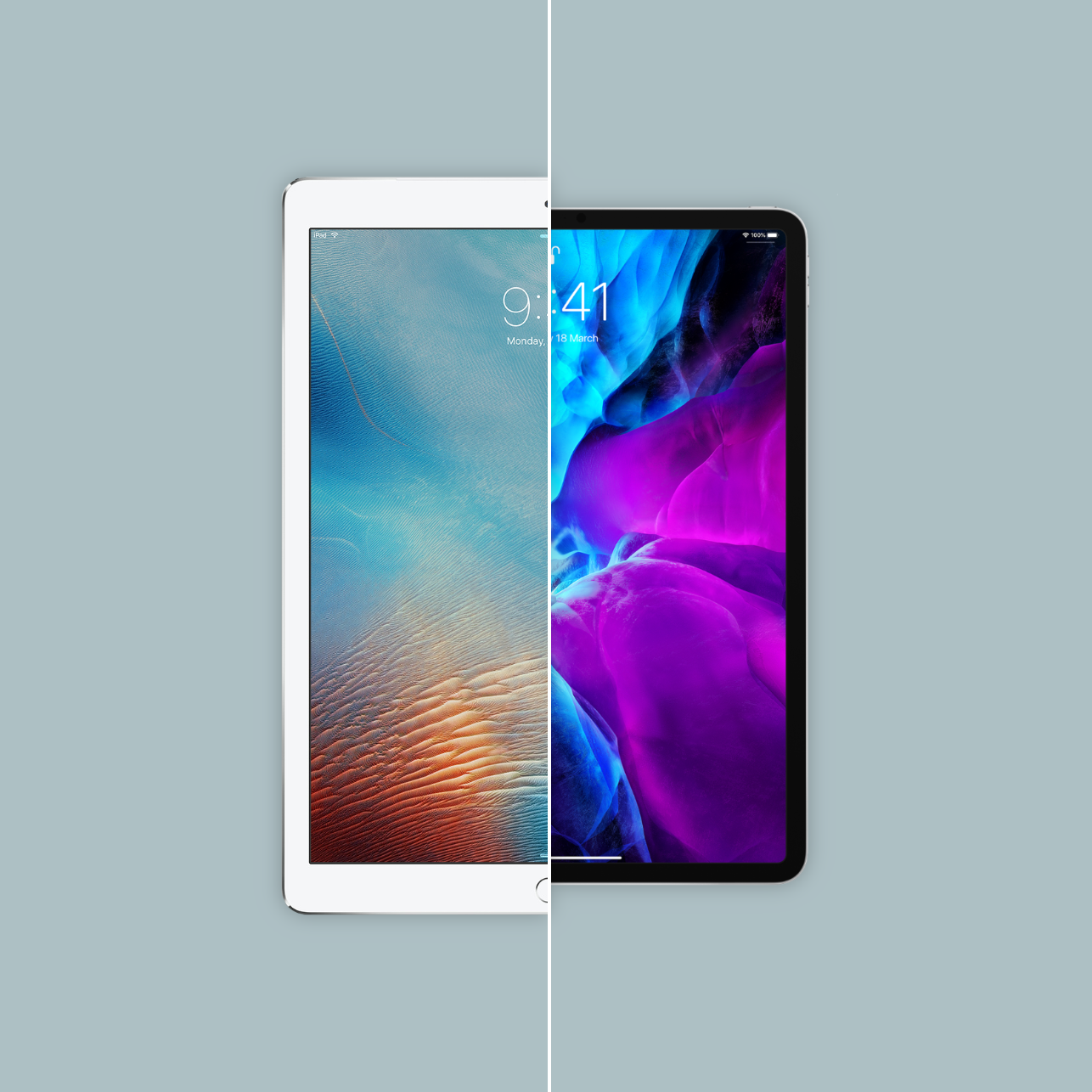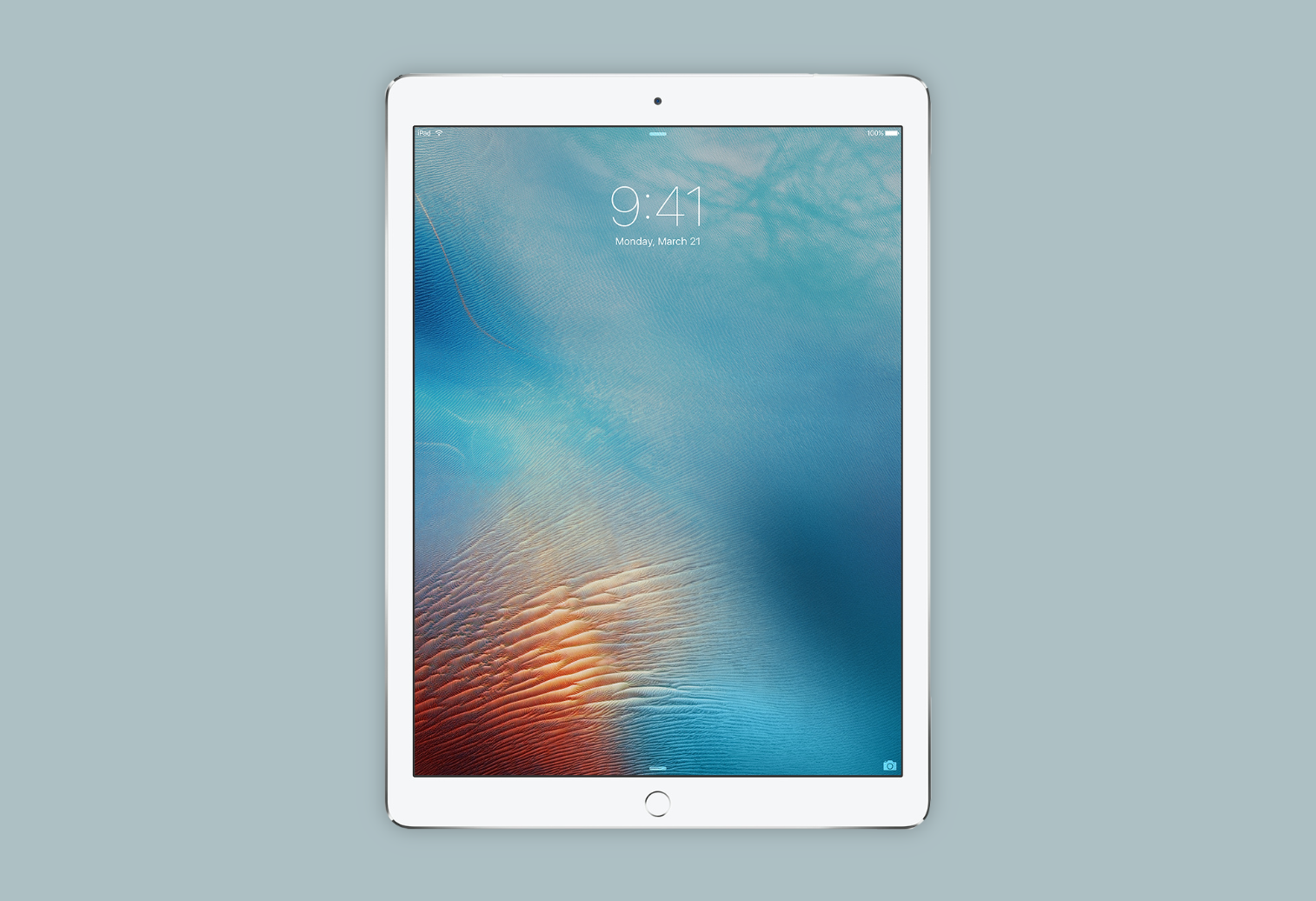iPad Pro 12.9” 2015 v. 2020
The iPad has been around since Late 2015, and multiple software and hardware iterations have helped to radically transform not just the product, but Apple’s approach to computing.
Apple's 12.9" iPad Pro went on sale in November 2015 after being announced by the company a few months prior during a September 2015 keynote. With nearly 2x the CPU performance of the existing iPad Air 2, a massive 12.9" display, & 2.5 million more pixels than any other iPad at the time, the iPad Pro marketed itself as a powerful, more expansive iPad for creative professionals. With the tandem release of the Apple Pencil & Smart Connector to complement the iPad Pro, this product began a multi-year transition to shift what the core of the iPad was to become.
iPad = Consumption
One strike that's been made against the iPad since it debuted in 2010 was that it wasn't a real creation device but rather a consumption device. While the iPad ecosystem has had a growing suite of creation apps - from word processing to photo professional-grade photo-editing - these were often viewed secondary to the iPad as first and foremost a device for consuming content. Hardware, notably the iPads small 9.7" screen & absence of a keyboard, and software limitations (i.e., zero multi-tasking), further cornered the iPad device in a predominantly consumption-focused camp.
iPad Pro 2015
Announced: September 09, 2015
Released November 11, 2015
Dimensions: 8.68” W x 12” H x .27” D
Capacity: 32GB (WiFi only), or 128 & 256GB (WiFi or WiFi + LTE)
Processor: Apple A9X with 2 processor cores running at 2260 MHz
Geekbench 5 Single-Core: 659
Geekbench 5 Multi-Core: 1196
M9 coprocessor
Memory: 4GB LPDDR4 SDRAM
Display
400 nits max brightness
2732x2048 resolution at 264 ppi
Full sRGB & IPS technology
Camera
Rear Cameras: 8MP (ƒ/2.4) Wide
Front Camera: 1.2MP FaceTime HD camera
Rear Video: 1080p HD video recording at 30 FPS
Then iPad Pro Enters
I'll give Apple credit for sticking it out because, year after year, they continued to push for the iPad to be seen as a legitimate creation device. And when the iPad Pro was announced in September 2015, that push became even more apparent.
First, there was the hardware. The display featured 2.5 million more pixels and was designed so that the width (2048 pixels) perfectly matched the height of the iPad 9.7". This ratio meant that the iPad Pro could run existing iPad apps in full size alongside a second slightly resized app. A much faster processor (the A9X) and a four-speaker audio system also elevated the product above existing iPads.
Then there was the software. Ignoring for a second just how terrible the original app switcher was, iOS 9 introduced new multi-tasking features that enhanced the experience of using an iPad Pro - including Slide Over, Split View, and Picture in Picture.
The Apple Smart Keyboard & Apple Pencil for the iPad Pro.
And finally, there were the accoutrements. Alongside the iPad Pro came the introduction of the Apple Pencil & Smart Keyboard. The Apple Pencil turned the iPad Pro into a gorgeous 12.9" canvas for pixel-precise graphic design, and the Smart Keyboard introduced a durable & portable keyboard that paired without the use of batteries or Bluetooth.
The push of hardware, updated software, and compelling new accessories gave Tim Cook a robust platform for declaring the iPad as a contender in the laptop space:
“Yes, the iPad Pro is a replacement for a notebook or a desktop for many, many people. They will start using it and conclude they no longer need to use anything else, other than their phones.”
Growing Pains
The iPad entered the market with more sticker shock than expected for a tablet. Though starting at $799 for a 32GB model, a 128GB WiFi model began at $949 ($1,079 for a cellular model) and required that you spend an additional $99 & $169 if you wanted the Apple Pencil and Smart Keyboard (which, let's face it, you did). The iPad Pro now had a starting price that rivalled the 13" MacBook Pro, and iOS's software limitations - lack of file management, efficient multi-tasking, sandboxed & mobile-class applications that needed to optimization for the larger screen - made selecting the iPad Pro over a well-spec'd Mac laptop a fraught decision for some.
iPad Pro 2020
Dimensions: 8.46” W x 11.04” H x .23” D
Capacity: 128GB, 256GB, 512GB, & 1TB (all WiFi or WiFi + LTE)
Processor: Apple A12Z with 8 processor cores running at 2490 MHz
Geekbench 5 Single-Core: 1118
Geekbench 5 Multi-Core: 4623
Neural Engine & M12 coprocessor
Memory: 6GB LPDDR4X SDRAM
Display
600 nits max brightness
2732x2048 resolution at 264 ppi
ProMotion (120Hz display)
Wide colour display (P3) with True Tone display & IPS technology
Cameras
Rear Cameras: 12MP (ƒ/1.8) Wide, 10MP (ƒ/2.4) Ultra Wide, & LiDAR Scanner
Front Camera: 7MP TrueDepth front camera
Rear Video: 4K video recording at 24/30/60 FPS (Wide); 60 fps (Ultra Wide)
Now in 2020
But a lot has happened with the iPad Pro in the intervening years. Following the release of the iPad Pro in 2015, Apple introduced a new 9.7" model in the spring of 2016 and later launched a new 10.5" iPad Pro while also introducing a 120Hz refresh rate across the Pro line in 2017. Yearly updates to iOS also introduced more refined iPad-centric features. iOS 11 added the ability to drag files/clips between applications, a new Files app, and improved multi-tasking switcher & dock. Years later, iOS 13 introduced a new branch of iOS-specific to the iPad - iPadOS - which included a new Home Screen, improved multi-tasking, a desktop-class browser, improved connectivity with USB storage devices, and Mouse and trackpad support.
As the iPad Pro has matured, technologies initially developed for the Pro have made their way into Apple's other products. For example, Apple Pencil support was introduced into the budget 9.7" iPad in 2017, the iPad mini 5 & iPad Air 3 in the spring of 2019, and the new 10.2" budget iPad in the fall. The Smart Keyboard also became available for the new Air 3 & 10.2" iPad after remaining exclusive to the iPad Pro line for years. Some software features, like True Tone, eventually also made their way across Apple's other products, while technologies like ProMotion continue to remain exclusive for Apple's Pro line of iPads.
In 2018 the iPad Pro also saw its most significant redesign to date. A new squared-off housing and thinner bezels allowed the iPad Pro to maintain the same 12.9" screen in a housing that was 25% smaller than its predecessor. This design language became so popular that it is rumoured to influence the design of a new iMac, the next iPad Air, & the iPhone 12. In 2020, Apple's updated the iPad Pro & introduced two compelling new features: built-from-the-ground-up cursor support and a new backlit Magic Keyboard that rivals the typing experience of any Mac. With these new features, and performance that now competes with most MacBooks, some have wondered if the 2020 iPad Pro will serve as the developer kit for Apple's rumoured transition to ARM processors.
Across the years, Apple's iPad Pro has developed a distinct identity as a powerful, modular, laptop/desktop replacement. With excellent hardware and continuously evolving software, the iPad Pro is the branch of Apple products that I am most excited about. I can't wait to see how the innovations in this line continue to shape the product & company as a whole.
External Articles:
Apple Press Release: Apple Introduces iPad Pro Featuring Epic 12.9-inch Retina Display
Article: Apple's Tim Cook declares the end of the PC and hints at new medical product
YouTube: Apple 2015 iPad Pro Keynote
YouTube: Apple introduces 2018 iPad Pro




